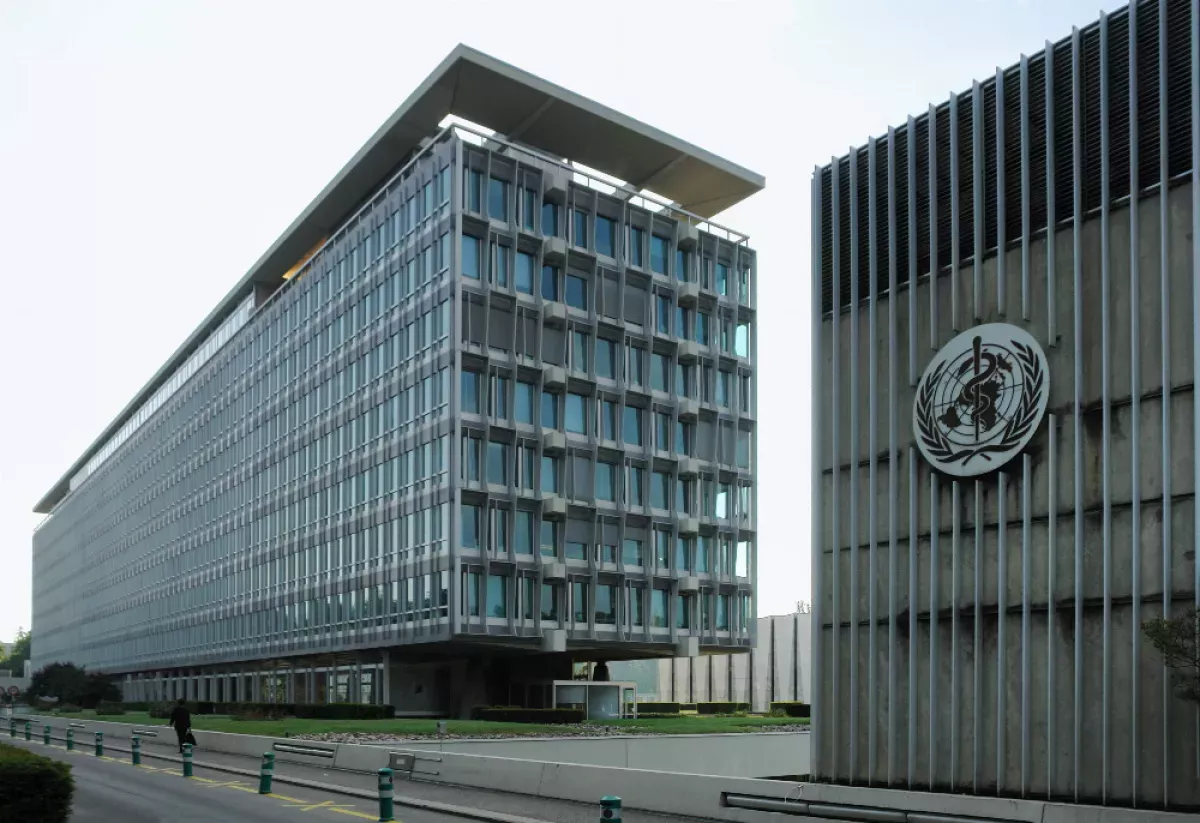The World Health Organization (WHO) is a specialized agency of the United Nations focused on international public health. Headquartered in Geneva, Switzerland, it operates with six regional offices and 150 field offices globally. Membership is limited to sovereign states, making it the largest intergovernmental health organization internationally.
1902: Pan-American Sanitary Bureau Founded
In 1902, The Pan-American Sanitary Bureau was founded as a result of the successes of the International Sanitary Conferences.
1907: Office International d'Hygiène Publique Founded
In 1907, the Office International d'Hygiène Publique, or "International Office of Public Hygiene" in English was founded.
1912: ROC controlled Mainland China
From 1912, the Republic of China (ROC) controlled Mainland China.
1920: League of Nations Establishes Health Organization
In 1920, the League of Nations established the Health Organization of the League of Nations.
1938: International Sanitary Conferences Concluded
In 1938, the International Sanitary Conferences (ISC), which began in 1851, concluded after approximately 87 years of meetings. The conferences addressed various epidemic diseases.
1945: United Nations Conference on International Organization
During the 1945 United Nations Conference on International Organization, delegates from China, Norway and Brazil discussed creating an international health organization under the auspices of the new United Nations. A declaration was passed calling for an international conference on health.
July 1946: Constitution of the World Health Organization Signed
In July 1946, the constitution of the World Health Organization was signed by all 51 countries of the United Nations, and by 10 other countries, becoming the first specialized agency of the United Nations to which every member subscribed.
1947: Epidemiological Information Service Established
In 1947, the WHO established an epidemiological information service via telex.
April 1948: WHO Established
In April 1948, the World Health Organization (WHO) was established.
April 1948: WHO Constitution Comes Into Force
On April 7, 1948, the constitution of the World Health Organization formally came into force on the first World Health Day, after being ratified by the 26th member state.
July 1948: First Meeting of the World Health Assembly
In July 1948, the first meeting of the World Health Assembly concluded, securing a budget of US$5 million for 1949. G. Brock Chisholm was appointed director-general and Andrija Štampar was the assembly's first president. Priorities included controlling malaria, tuberculosis and STIs, and improving maternal/child health, nutrition and environmental hygiene. Its first legislative act was concerning the compilation of accurate statistics on the spread and morbidity of disease.
September 1, 1948: WHO Formally Begins Work
On September 1, 1948, the World Health Organization formally began its work.
September 1948: WHO Formally Begins Work
In September 1948, the World Health Organization formally began its work, incorporating assets, personnel, and duties from the League of Nations' Health Organization and the Office International d'Hygiène Publique.
1949: Soviet Union Quits WHO
In 1949, the Soviet Union and its constituent republics quit the WHO over the organization's unwillingness to share the penicillin recipe.
1949: WHO Budget Secured
In 1949, the WHO secured a budget of US$5 million (then £1,250,000) for the year. The first priorities were to control the spread of malaria, tuberculosis and sexually transmitted infections, and to improve maternal and child health, nutrition and environmental hygiene.
1949: End of ROC control of Mainland China
The Republic of China (ROC) controlled Mainland China from 1912 to 1949.
1949: Regional divisions of WHO were created
The regional divisions of WHO were created between 1949 and 1952, following the model of the pre-existing Pan American Health Organization.
1950: Mass Tuberculosis Inoculation Drive Begins
In 1950, a mass tuberculosis inoculation drive using the BCG vaccine gets under way.
1951: Agency work begins
In 1951, the WHO's work began in earnest after a significant infusion of financial and technical resources.
1952: Regional divisions of WHO were created
The regional divisions of WHO were created between 1949 and 1952, following the model of the pre-existing Pan American Health Organization.
1955: Malaria Eradication Programme Launched
In 1955, the malaria eradication programme was launched, although objectives were later modified to focus on control instead of eradication in most areas.
1956: Soviet Union Re-joins WHO
In 1956, the Soviet Union and its constituent republics returned to the WHO.
1958: Call for Global Smallpox Eradication
In 1958, Viktor Zhdanov, Deputy Minister of Health for the USSR, called on the World Health Assembly to undertake a global initiative to eradicate smallpox, resulting in Resolution WHA11.54.
1959: Agreement WHA 12-40 Signed
In 1959, the WHO signed Agreement WHA 12–40 with the International Atomic Energy Agency (IAEA).
1961: Mandate Under Single Convention on Narcotic Drugs
In 1961, the WHO was mandated under the Single Convention on Narcotic Drugs to carry out scientific assessments of substances for international drug control.
1965: First Report on Diabetes Mellitus and Creation of IARC
In 1965, the WHO published the first report on diabetes mellitus and established the International Agency for Research on Cancer.
1966: WHO headquarters inaugurated
In 1966, the WHO headquarters in Geneva, Switzerland, designed by Swiss architect Jean Tschumi, was inaugurated.
1966: WHO Moves Headquarters
In 1966, the WHO moved its headquarters from the Ariana wing at the Palace of Nations to a newly constructed headquarters elsewhere in Geneva.
1967: Smallpox Eradication Campaign Intensified
In 1967, the WHO intensified the global smallpox eradication campaign by contributing $2.4 million annually and adopted a new disease surveillance method, at a time when 2 million people were dying from smallpox per year.
1971: PRC replaces ROC in WHO
In 1971, the United Nations General Assembly Resolution 2758 led to the People's Republic of China (PRC) replacing the Republic of China (ROC) in the WHO and other UN bodies.
1971: Mandate Under Convention on Psychotropic Substances
In 1971, the WHO was mandated under the Convention on Psychotropic Substances to carry out scientific assessments of substances for international drug control.
1971: ROC expelled from WHO
The ROC's first participation at WHO meetings since 1971, as a result of the improved cross-strait relations since Ma Ying-jeou became the president of the Republic of China a year before.
1972: WHO helps contain the last European outbreak in Yugoslavia
In 1972, The WHO helped contain the last European outbreak of smallpox in Yugoslavia.
1974: Expanded Programme on Immunization and Onchocerciasis Control Started
In 1974, the Expanded Programme on Immunization and the control programme of onchocerciasis was started. This was an important partnership between the Food and Agriculture Organization (FAO), the United Nations Development Programme (UNDP), and the World Bank.
1974: Request for Intensive Effort to Control Tropical Diseases
In 1974, the WHA requested for an intensive effort to develop improved control of tropical diseases.
1975: Special Programme for Research and Training in Tropical Diseases Launched
In 1975, the WHO launched the Special Programme for Research and Training in Tropical Diseases (the TDR). It was co-sponsored by UNICEF, UNDP, and the World Bank and established in response to a 1974 request from the WHA for an intensive effort to develop improved control of tropical diseases. The TDR's goals are to support and coordinate international research into diagnosis, treatment and control of tropical diseases and to strengthen research capabilities within endemic countries.
1976: Resolution on Disability Prevention and Rehabilitation
In 1976, the WHA enacted a resolution on disability prevention and rehabilitation, with a focus on community-driven care.
1977: First List of Essential Medicines Drawn Up
In 1977, the first list of essential medicines was drawn up.
1978: Health For All Goal Declared
In 1978, the ambitious goal of "Health For All" was declared.
1979: Smallpox Declared Eradicated
In 1979, after over two decades of fighting smallpox, a Global Commission declared that the disease had been eradicated – the first disease in history to be eliminated by human effort.
1981: Adoption of International Code of Marketing of Breast-milk Substitutes
In 1981, the International Code of Marketing of Breast-milk Substitutes was adopted, an international policy framework produced by WHO.
1983: Murray Eden awarded WHO Medical Society medal
In 1983, Murray Eden received the WHO Medical Society medal for his contributions as a consultant on research and development for the WHO director-general.
1983: Publication of Entre Nous Magazine
Since 1983, the Division of Noncommunicable Diseases for Promoting Health through the Reproductive Health has published the magazine, Entre Nous, across Europe.
1986: Global Programme on HIV/AIDS Began
In 1986, the WHO began its global programme on HIV/AIDS.
1988: Global Polio Eradication Initiative Established
In 1988, the Global Polio Eradication Initiative was established.
1988: Launch of Global Polio Eradication Initiative
In 1988, the WHO launched the Global Polio Eradication Initiative to eradicate polio, partnering with Rotary International, the US Centers for Disease Control and Prevention (CDC), the United Nations Children's Fund (UNICEF), and smaller organizations, leading to a 99% reduction in cases.
1990: Decline in Tuberculosis Deaths
Between 1990 and 2010, WHO's help contributed to a 40% decline in the number of deaths from tuberculosis.
1995: International Commission for the Certification of Dracunculiasis Eradication Established
In 1995, the WHO established an independent International Commission for the Certification of Dracunculiasis Eradication (Guinea worm disease eradication; ICCDE).
1996: Joint United Nations Programme on HIV/AIDS Formed
In 1996, the Joint United Nations Programme on HIV/AIDS (UNAIDS) was formed.
1998: WHO Director-General Highlights Gains on Fiftieth Anniversary
In 1998, on the fiftieth anniversary of WHO's founding, the WHO's director-general highlighted gains in child survival, reduced infant mortality, increased life expectancy and reduced rates of "scourges" such as smallpox and polio.
1999: Regional directors serve for a once-renewable five-year term
Since 1999, regional directors serve for a once-renewable five-year term, and typically take their position on 1 February.
2000: Stop TB Partnership Created
In 2000, the Stop TB Partnership was created along with the UN's formulation of the Millennium Development Goals.
2001: Measles Initiative Formed
In 2001, the measles initiative was formed, and credited with reducing global deaths from the disease by 68% by 2007.
2002: WHO increases collaboration with NGOs
As of 2002, the WHO had partnerships with 473 nongovernmental organizations (NGO), including 189 formal "official relations" with international NGOs and partnerships with the Bill and Melinda Gates Foundation and the Rockefeller Foundation.
2002: Global Fund to Fight AIDS, Tuberculosis and Malaria Created
In 2002, the Global Fund to Fight AIDS, Tuberculosis and Malaria was drawn up to improve the resources available.
2002: SARS epidemic
The 2002 SARS epidemic served as a backdrop to the revision of the International Health Regulations.
2003: Adoption of Framework Convention on Tobacco Control
In 2003, the Framework Convention on Tobacco Control was adopted, an international policy framework produced by WHO.
2003: WHO Denounces Opposition to Condom Use
In 2003, the WHO denounced the Roman Curia's health department's opposition to the use of condoms, emphasizing the dangers of incorrect statements about condoms during a global HIV/AIDS pandemic.
2004: Board role in regional director appointments
As of 2004, the WHO board had never over-ruled the preference of a regional committee in the appointment of a regional director, although the exact role of the board has been a subject of debate.
2005: WHO revises International Health Regulations
In 2005, the WHO revised International Health Regulations (IHR) in light of emerging health threats and the experience of the 2002/3 SARS epidemic, authorizing WHO, among other things, to declare a health threat a Public Health Emergency of International Concern.
2005: Treatment of Tuberculosis
Since 2005, over 46 million people have been treated for tuberculosis and an estimated 7 million lives saved through practices advocated by the WHO, including engaging national governments, early diagnosis, standardizing treatment, monitoring the spread, and stabilizing the drug supply.
2006: WHO Endorsed First Official HIV/AIDS Toolkit for Zimbabwe
In 2006, the WHO endorsed the world's first official HIV/AIDS Toolkit for Zimbabwe, which formed the basis for a global plan to fight the AIDS pandemic.
2006: WHO Launches Global Action Plan for Influenza Vaccines
In 2006, the WHO launched the Global action plan for influenza vaccines.
January 2007: Margaret Chan becomes director-general of WHO
Margaret Chan served as director-general of WHO from January 2007 to June 2017.
2007: Measles Initiative Reduced Global Deaths
By 2007, the Measles Initiative was credited with reducing global deaths from the disease by 68%.
2007: Independent WHO Weekly Vigil Begins
In 2007, Independent WHO held a weekly vigil in front of WHO headquarters, which continued until 2017.
2007: Pandemic Influenza Vaccine Development
In 2007, the WHO organized work on pandemic influenza vaccine development through clinical trials in collaboration with many experts and health officials.
April 2009: Declaration of H1N1 Influenza Pandemic
In April 2009, the WHO's director-general, Margaret Chan, declared a pandemic involving the H1N1 influenza virus.
May 2009: ROC attends World Health Assembly as observer
In May 2009, the Department of Health of the Republic of China was invited by the WHO to attend the 62nd World Health Assembly as an observer under the name "Chinese Taipei".
September 2009: PAHO/AMRO policy on research for health approved
In September 2009, the Pan American Health Organization (PAHO/AMRO) became the first region to develop and pass a policy on research for health.
2009: Catholic Church's Continued Opposition to Contraception
As of 2009, the Catholic Church remained opposed to increasing the use of contraception to combat HIV/AIDS, with the World Health Assembly president condemning Pope Benedict's stance.
2009: Taiwan participates as observer
From 2009, the government of Taiwan was allowed to participate under the designation "Chinese Taipei" as an observer.
2009: UNAIDS Interim Tasks
In line with UNAIDS, WHO set interim tasks between 2009 and 2015 to reduce HIV infections in those aged 15-24 by 50%, new infections in children by 90%, and HIV-related deaths by 25%.
2009: Significant fall in outlay compared to the previous 2009–2010 budget
The 2012–2013 budget represented a significant fall in outlay compared to the previous 2009-2010 budget.
2010: WHO Representative composition in 2010
As of 2010, the only WHO Representative outside Europe to be a national of that country was for Libya.
2010: Decline in Tuberculosis Deaths
Between 1990 and 2010, WHO's help contributed to a 40% decline in the number of deaths from tuberculosis.
2010: H1N1 Pandemic Moves to Post-Pandemic Period
In 2010, Margaret Chan declared that the H1N1 influenza pandemic had moved into the post-pandemic period; however, critics claimed the WHO had exaggerated the danger, while industry experts cited unprecedented collaboration and comprehensive pandemic response.
2010: Adoption of Global Code of Practice on the International Recruitment of Health Personnel
In 2010, the Global Code of Practice on the International Recruitment of Health Personnel was adopted, an international policy framework produced by WHO.
2010: Significant fall in outlay compared to the previous 2009–2010 budget
The 2012–2013 budget represented a significant fall in outlay compared to the previous 2009-2010 budget.
2011: Polio Immunization Efforts
As of 2011, the WHO was working to immunize young children and prevent the re-emergence of polio cases in countries declared "polio-free", continuing the efforts of the Global Polio Eradication Initiative.
2011: World Health Day theme: drug resistance
In 2011, World Health Day, observed annually on April 7th, focused on drug resistance as its theme. This day is timed to coincide with the anniversary of the WHO's founding.
July 4, 2012: Report of discrepancies in WHO's Framework Convention on Tobacco implementation database
On July 4, 2012, researchers Hoffman and Rizvi reported numerous discrepancies between WHO's Framework Convention on Tobacco implementation database and national implementation reports. They found that 32.7% of countries' responses were misreported.
2012: World Health Day theme: healthy ageing
In 2012, World Health Day, observed annually on April 7th, focused on healthy ageing as its theme. This day is timed to coincide with the anniversary of the WHO's founding.
2012: WHO Budget Allocation
In 2012, the WHO budget identified five areas among which funding was distributed, with two specifically aimed at reducing the burden of communicable diseases in general and combating HIV/AIDS, malaria, and tuberculosis in particular.
2012: RTS,S/AS01 Malaria Vaccine Assessment
In 2012, the WHO was to report as to whether RTS,S/AS01 was a viable malaria vaccine. In the meantime, insecticide-treated mosquito nets and insecticide sprays, as well as antimalarial drugs, were used to prevent the spread of malaria, especially for vulnerable groups like pregnant women and young children.
2012: Deaths from Unhealthy Environments
The WHO estimates that in 2012, 12.6 million people died as a result of living or working in an unhealthy environment, accounting for nearly 1 in 4 total global deaths. Environmental risk factors, such as pollution, chemical exposures, and climate change, contribute to more than 100 diseases and injuries.
December 2013: Launch of MiNDbank database
On December 10, 2013, WHO launched MiNDbank, a new database providing information about mental health, substance abuse, disability, human rights, and related policies and services. The launch, on Human Rights Day, was part of WHO's QualityRights initiative.
2013: Ebola epidemic
Billions of dollars have been spent by developed countries on the 2013–2016 Ebola epidemic.
2013: WHO Budget Allocation
In 2013, the WHO budget identified five areas among which funding was distributed, with two specifically aimed at reducing the burden of communicable diseases in general and combating HIV/AIDS, malaria, and tuberculosis in particular.
2013: WHO proposed total expenditure in combined 2012–2013 budget
In the combined 2012–2013 budget, a total expenditure of $3,959 million was proposed, with $944 million (24%) from assessed contributions and $3,015 million (76%) from voluntary contributions.
May 2014: Polio Declared World Health Emergency
On 5 May 2014, the WHO announced that the spread of polio was a world health emergency due to outbreaks in Asia, Africa, and the Middle East, considered "extraordinary".
August 2014: Ebola Declared Public Health Emergency
On 8 August 2014, the WHO declared that the spread of Ebola was a public health emergency, after an outbreak believed to have started in Guinea spread to nearby countries like Liberia and Sierra Leone.
2014: Criticism Following Ebola Outbreak
Following the 2014 Ebola outbreak in West Africa, the WHO was heavily criticized for its bureaucracy, insufficient financing, regional structure, and staffing profile.
2014: World Health Day theme: vector-borne diseases
In 2014, World Health Day, observed annually on April 7th, focused on vector-borne diseases as its theme. This day is timed to coincide with the anniversary of the WHO's founding.
2014: Release of the Global Atlas of Palliative Care at the End of Life
In 2014, the WHO released the Global Atlas of Palliative Care at the End of Life in a joint publication with the Worldwide Hospice Palliative Care Alliance, an affiliated NGO working collaboratively with the WHO to promote palliative care in national and international health policy.
2015: WHO's Efforts within UNAIDS Network
As of 2015, the WHO worked within the UNAIDS network to involve diverse sections of society in addressing the economic and social impacts of HIV/AIDS.
2015: Announcement of Contingency Fund
At the annual World Health Assembly in 2015, Director-General Margaret Chan announced a $100 million Contingency Fund for rapid response to future emergencies.
2015: Ebola and Zika epidemic
Billions of dollars have been spent by developed countries on the 2013–2016 Ebola epidemic and 2015–16 Zika epidemic.
April 2016: Status of the Contingency Fund
By April 2016, the WHO had received $26.9 million for its $100 million Contingency Fund for rapid response to future emergencies (for 2017 disbursement) and $140 million for its $494 million Health Emergencies Programme in 2016-17.
2016: Zika epidemic
Billions of dollars have been spent by developed countries on the 2015–16 Zika epidemic.
2016: Taiwan participation ends
From 2009 to 2016, the government of Taiwan was allowed to participate under the designation "Chinese Taipei" as an observer, but has not been invited again since.
2016: Margaret Chan's hotel stay during West Africa visit
In 2016, Margaret Chan, the director-general of WHO, stayed in a $1000-per-night hotel room while visiting West Africa.
2016: End of ROC participation
In 2016, The ROC's participation with WHO ended due to diplomatic pressure from the PRC following the election in 2016 that brought the independence-minded Democratic Progressive Party back into power.
2016: World Health Emergencies Programme Formed
In 2016, following the perceived failure of the response to the West Africa Ebola outbreak, the World Health Emergencies programme was formed, changing the WHO from just being a "normative" agency to one that responds operationally to health emergencies.
2016: Global Action Plan for Influenza Vaccines Concludes
In 2016, the Global action plan for influenza vaccines ended with a report which concluded that while substantial progress has been made over the 10 years of the Plan, the world is still not ready to respond to an influenza pandemic.
2016: WHO drafted a global health sector strategy on HIV
In 2016, the World Health Organization drafted a global health sector strategy on HIV which outlined its commitment to ending the AIDS epidemic by 2030 with interim targets for the year 2020.
June 2017: Margaret Chan's tenure as director-general ends
Margaret Chan served as director-general of WHO from January 2007 to June 2017.
July 2017: Dr. Tedros Adhanom Ghebreyesus appointed director-general
On July 1, 2017, Dr. Tedros Adhanom Ghebreyesus was appointed as the director-general of WHO.
October 2017: Appointment and revocation of Robert Mugabe as WHO Goodwill Ambassador
In October 2017, director-general Tedros Adhanom Ghebreyesus appointed Zimbabwean president Robert Mugabe as a WHO Goodwill Ambassador, but the appointment was revoked the following day due to widespread condemnation.
2017: Independent WHO Weekly Vigil Ends
In 2017, Independent WHO ended a weekly vigil in front of WHO headquarters, which began in 2007.
2017: WHO refused Taiwanese delegates to attend the WHO annual assembly
In 2017, The ROC being barred from membership of the WHO and other UN-affiliated organizations, and the WHO refused to allow Taiwanese delegates to attend the WHO annual assembly.
2017: Contingency Fund Disbursement
In 2017, WHO had initial plans to disburse the $26.9 million received of the total $100 million for the Contingency Fund for rapid response to future emergencies.
2017: Study on Polio Vaccine Effectiveness
In 2017, a study was conducted to investigate why Polio Vaccines may not be enough to eradicate the Virus and explore new technologies to combat polio.
2017: International competition to redesign and extend WHO headquarters launched
In 2017, the WHO launched an international competition to redesign and extend its headquarters.
May 2018: WHO denies access to Taiwanese media and US support for Taiwan
In May 2018, the WHO denied access to its annual assembly by Taiwanese media, reportedly due to demands from the PRC. Later in May, 172 members of the United States House of Representatives wrote to the director-general of the World Health Organization to argue for Taiwan's inclusion as an observer at the WHA.
2018: China paid in assessed contributions US$75,796K
In Biennium 2018–2019 China paid in assessed contributions US$75,796K, in specified voluntary contributions US$10,184K, for a total US$85,980K.
April 2019: Recommendations on Screen Time for Children
In April 2019, the WHO released new recommendations stating that children between the ages of two and five should spend no more than one hour per day engaging in sedentary behavior in front of a screen and that children under two should not be permitted any sedentary screen time.
2019: COVID-19 Discovered
In 2019, the WHO announced that it had classified the novel coronavirus outbreak as a public health emergency of international concern. The novel coronavirus was a new strain of coronavirus that had never been detected in humans before. The WHO named this new coronavirus "COVID-19" or "2019-nCov".
2019: China paid in assessed contributions US$75,796K
In Biennium 2018–2019 China paid in assessed contributions US$75,796K, in specified voluntary contributions US$10,184K, for a total US$85,980K.
2019: Taiwan's response to the 2019–20 COVID-19 pandemic has bolstered its case for WHO membership.
Taiwan's effective response to the 2019–20 COVID-19 pandemic has bolstered its case for WHO membership. Taiwan's response to the outbreak has been praised by a number of experts.
2019: Initial Response to Pneumonia Cases
The WHO created an Incident Management Support Team on 1 January 2020, one day after in 2019 Chinese health authorities notified the organization of a cluster of pneumonia cases of unknown aetiology.
January 2020: EU backs Taiwan's participation in WHO
In January 2020, the European Union, a WHO observer, backed Taiwan's participation in WHO meetings related to the coronavirus pandemic as well as their general participation.
January 2020: Initial Response to COVID-19 Outbreak
In January 2020, the WHO created an Incident Management Support Team on 1 January, one day after Chinese health authorities notified the organization of a cluster of pneumonia cases of unknown aetiology. On 5 January the WHO notified all member states of the outbreak, and in subsequent days provided guidance to all countries on how to respond, and confirmed the first infection outside China. On 14 January 2020, the WHO announced that preliminary investigations conducted by Chinese authorities had found no clear evidence of human-to-human transmission of the novel coronavirus (2019-nCoV) identified in Wuhan, then later confirmed human-to-human transmission one week later. On 30 January the WHO declared a Public Health Emergency of International Concern (PHEIC).
April 2020: U.S. President Trump announces halt of WHO funding
In April 2020, U.S. President Donald Trump announced that his administration would halt funding to the WHO, pending an investigation into the organization's handling of the COVID-19 pandemic.
April 2020: US Halts Funding to WHO
On 14 April 2020, United States president Donald Trump announced he would halt United States funding to the WHO while reviewing its role in "severely mismanaging and covering up the spread of the coronavirus."
April 2020: Trump announces halt of US funding to WHO
On April 14, 2020, United States president Donald Trump said that he would halt United States funding to the WHO while reviewing its role in "severely mismanaging and covering up the spread of the coronavirus."
May 2020: New Zealand Foreign Minister expressed support for the ROC’s bid to rejoin the WHO
In early May 2020, New Zealand Foreign Minister Winston Peters expressed support for the ROC’s bid to rejoin the WHO during a media conference.
May 2020: Trump Administration agrees to pay up to what China pays in assessed contributions
On 16 May 2020, the Trump Administration agreed to pay up to what China pays in assessed contributions, which is less than about one-tenth of its previous funding.
May 2020: US Blocks UN Resolution Mentioning WHO
On 8 May 2020, the United States blocked a U.N. Security Council resolution aimed at promoting nonviolent international cooperation during the pandemic, which mentioned the WHO.
July 2020: US Formally Notifies UN of Intent to Withdraw from WHO
On 7 July 2020, President Trump formally notified the UN of his intent to withdraw the United States from the WHO.
2020: WHO refused Taiwanese delegates to attend the WHO annual assembly
In 2020, The ROC being barred from membership of the WHO and other UN-affiliated organizations, and the WHO refused to allow Taiwanese delegates to attend the WHO annual assembly.
2020: WHO budget for 2020-2021
In 2020, the WHO's total approved budget for 2020-2021 was over $7.2 billion.
2020: WHO Classifies COVID-19 as Public Health Emergency
In 2020, the World Health Organization announced that it had classified the novel coronavirus outbreak as a public health emergency of international concern. The WHO named this new coronavirus "COVID-19" or "2019-nCov".
2020: Largest contributors in 2020–21
In 2020, the largest contributors were Germany, Gates Foundation, United States, United Kingdom and European Commission.
2020: Bruce Aylward appears to dodge questions about Taiwan
In a 2020 interview, Assistant Director-General Bruce Aylward appeared to dodge a question from RTHK reporter Yvonne Tong about Taiwan's response to the pandemic and inclusion in the WHO, leading to accusations about the PRC's political influence over the organization.
2020: Interim targets for the year 2020
The World Health Organization planned to make achievements towards interim targets for the year 2020, according to the draft global health sector strategy on HIV.
January 2021: US Resumes Funding to WHO
In January 2021, President Joe Biden cancelled the planned withdrawal and announced that the U.S. would resume funding the World Health Organization.
January 2021: Biden cancels US withdrawal from WHO and resumes funding
In January 2021, President Joe Biden cancelled the planned withdrawal and announced that the U.S. would resume funding the organization.
2021: Formalization of the Holy See's participation as a non-Member State Observer
In 2021, the Holy See's participation as "non-Member State Observer" was formalized by an Assembly resolution.
2021: WHO Executive Board forms Working Group on Sustainable Financing
In 2021, the WHO Executive Board established a Working Group on Sustainable Financing to reassess the WHO's funding strategy and propose recommendations.
2021: WHO budget for 2020-2021
In 2021, the WHO's total approved budget for 2020-2021 was over $7.2 billion.
2022: Expected increase in American funding
During the first two years of the pandemic, American funding of the WHO declined by a quarter, although it is expected to increase during 2022 and 2023.
2022: WHO Suggests Formation of Global Health Emergency Council
In 2022, the WHO suggests formation of a Global Health Emergency Council, with a new global health emergency workforce, and recommends revision of the International Health Regulations.
2022: WHO budget for 2022-2023
In 2022, the WHO's approved budget for 2022-2023 was over $6.2 billion.
2022: World Health Assembly adopts recommendations on sustainable financing
In 2022, the World Health Assembly adopted the recommendations from the Working Group on Sustainable Financing, with a key decision to increase compulsory member dues to 50% of WHO's 2022–2023 base budget by the end of the 2020s.
2022: Integration of traditional medicine classifications in ICD-11
In 2022, the new International Statistical Classification of Diseases and Related Health Problems, ICD-11, will attempt to enable classifications from traditional medicine to be integrated with classifications from evidence-based medicine.
May 2023: COVID-19 No Longer a World-Wide Health Emergency
In May 2023, the WHO announced that COVID-19 was no longer a world-wide health emergency.
June 2023: Dr. Hanan Mohamed Al Kuwari of Qatar chairs the executive board
As of June 2023, the chair of the executive board is Dr. Hanan Mohamed Al Kuwari of Qatar.
2023: Expected increase in American funding
During the first two years of the pandemic, American funding of the WHO declined by a quarter, although it is expected to increase during 2022 and 2023.
2023: WHO budget for 2022-2023
In 2023, the WHO's approved budget for 2022-2023 was over $6.2 billion.
2023: Increase in compulsory member dues expected
The World Health Assembly in 2022 decided that compulsory member dues will be increased to 50% of WHO's 2022-2023 base budget by the end of the 2020s and these changes are expected to start having impact in 2023.
2024: Mpox Declared a Public Health Emergency
In 2024, WHO declared the spread of mpox (formerly monkeypox) in several African countries a public health emergency of international concern.
2024: Bill & Melinda Gates Foundation major private contributor
In 2024, the Bill & Melinda Gates Foundation funded 10% of WHO's budget, making it the organization's major private contributor.
2024: WHO Budget for 2024-2025
In 2024, the WHO budget is $6.83 billion for 2024-2025.
January 2025: WHO Member states and US withdrawl
As of January 2025, the WHO has 194 member states: all member states of the United Nations except for Liechtenstein (192 countries), plus the Cook Islands and Niue. On January 20, 2025, U.S. President Donald Trump signed an executive order initiating the 12-month process of withdrawing the U.S. from the WHO.
January 2025: President Trump issues executive order to withdraw the United States from the WHO
In January 2025, during his second term, President Trump issued an executive order to withdraw the United States from the WHO, citing WHO's mishandling of the COVID-19 pandemic originating in Wuhan, among other reasons.
January 2025: Release of guideline Use of lower-sodium salt substitutes
In January 2025, the WHO released a new guideline Use of lower-sodium salt substitutes which strongly recommends reducing sodium intake to less than 2 g/day and conditionally recommends replacing regular table salt with lower-sodium salt substitutes that contain potassium. This recommendation is intended for adults (not pregnant women or children) in general populations, excluding individuals with kidney impairments or with other circumstances or conditions that might compromise potassium excretion.
January 2025: Trump announces halt of US funding to WHO for a second time
On 20 January 2025, an executive order was signed by a re-inaugurated Trump, formally notifying the United Nations of his intent to withdraw the United States from the WHO for a second time.
February 2025: Argentina announces withdrawl from WHO
On February 5, 2025, Argentinian president Javier Milei announced that Argentina would also be withdrawing from WHO.
2025: WHO Budget for 2024-2025
In 2025, the WHO budget is $6.83 billion for 2024-2025.
2030: WHO's commitment to ending the AIDS epidemic
The World Health Organization drafted a global health sector strategy on HIV which outlined its commitment to ending the AIDS epidemic by 2030.
Mentioned in this timeline
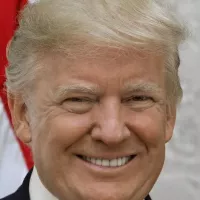
Donald John Trump is an American politician media personality and...
Facebook is a social media and networking service created in...

Joe Biden a member of the Democratic Party served as...
Qatar is a country located on the Qatar Peninsula in...
The Union of Soviet Socialist Republics USSR existed from to...
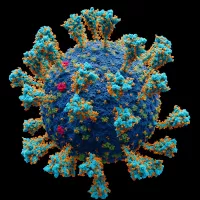
Coronaviruses are a family of RNA viruses affecting mammals and...
Trending

Kyle Van Noy is an American football linebacker currently playing for the Baltimore Ravens He played college football at BYU...

Ja'Marr Chase is a highly accomplished American football wide receiver currently playing for the Cincinnati Bengals in the NFL He...

4 months ago Travis Hunter's College GPA Sparks Buzz After NFL Debut; Coach Praises Skillset.
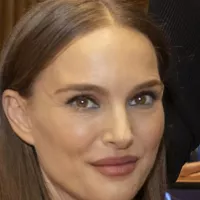
2 months ago Natalie Portman: Ahsoka Season 2 Theory, Miss Dior Essence, AI Actress Controversy.
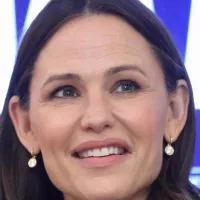
6 months ago Jennifer Garner and John Miller share passionate kiss; Ben Affleck spotted solo.

Matthew Vincent Milano is an American football linebacker who currently plays for the Buffalo Bills in the NFL His college...
Popular

Candace Owens is an American conservative political commentator and author...

Ilhan Omar is an American politician currently serving as the...

XXXTentacion born Jahseh Dwayne Ricardo Onfroy was a controversial yet...

Tom Cotton is an American politician and Army veteran currently...
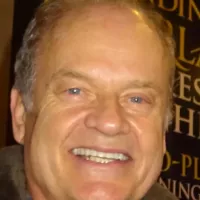
Kelsey Grammer is an accomplished American actor producer and singer...
The Kennedy Center Honors are annual awards recognizing individuals and...
